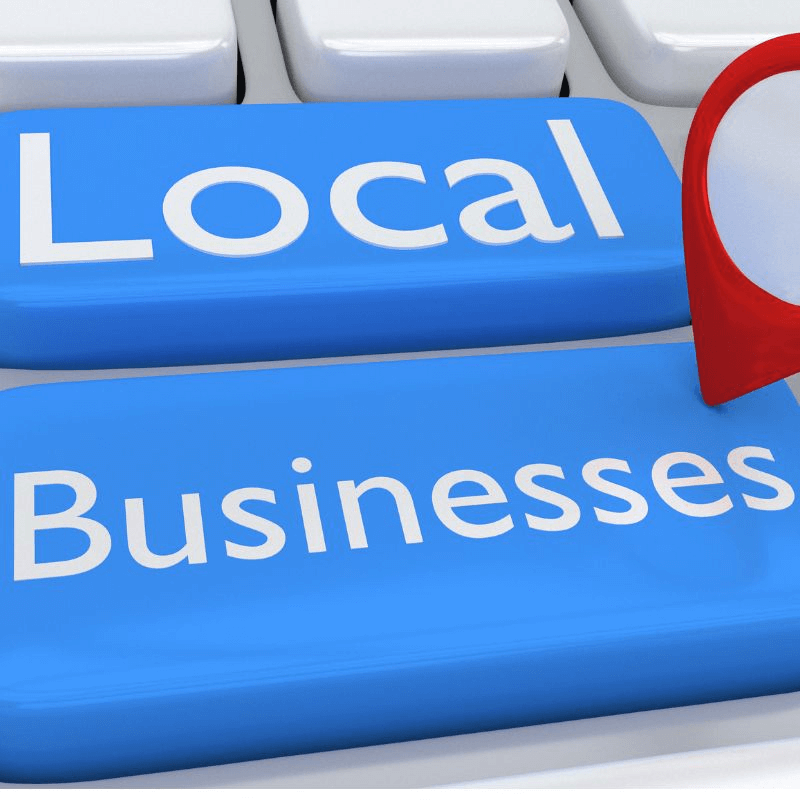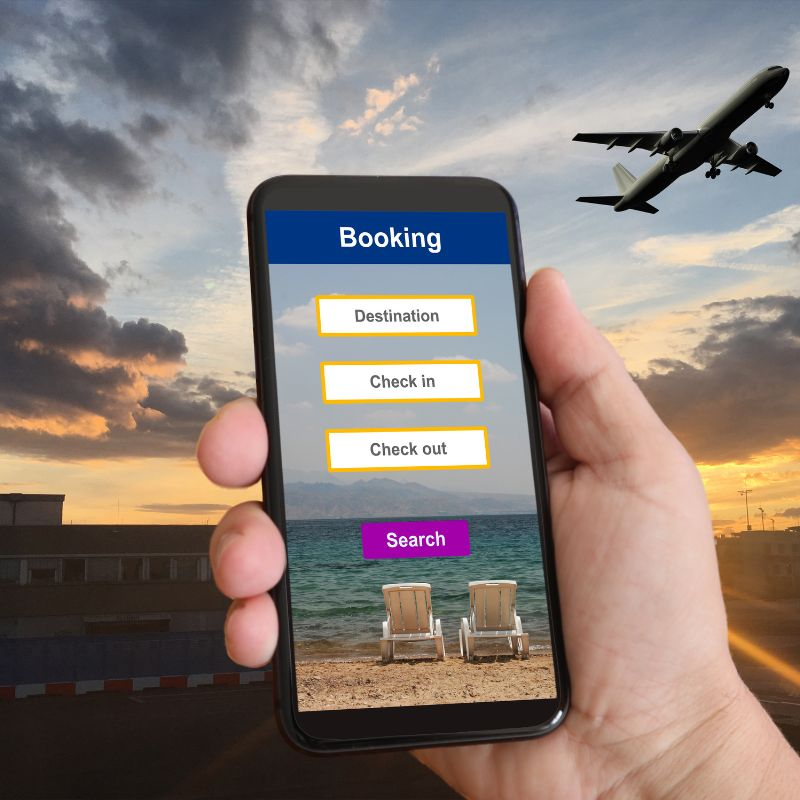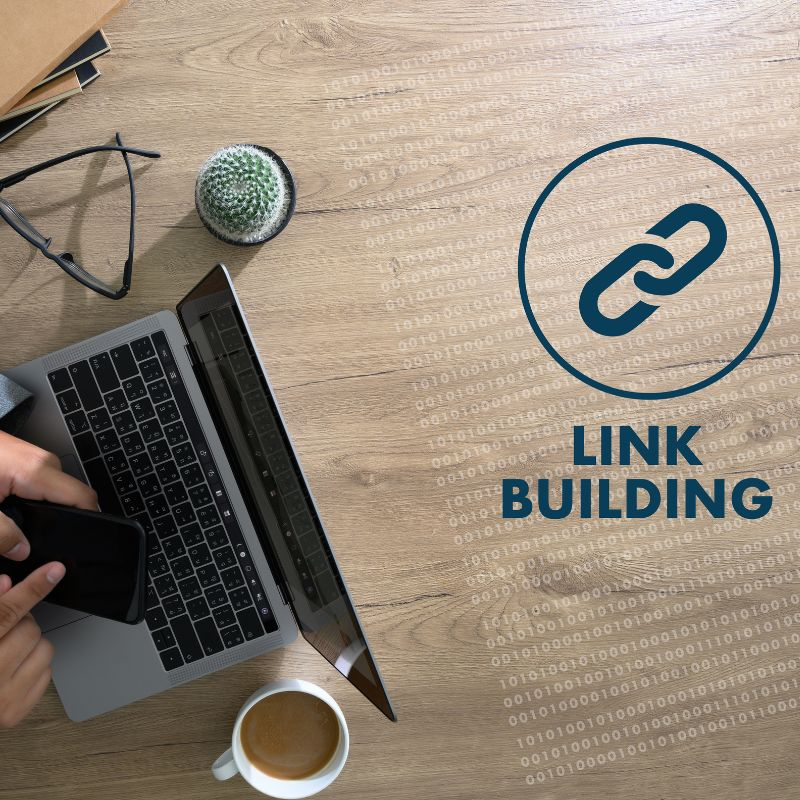So, you have created a website for your small business and are waiting for customer inquiries to pour in. But after waiting a few days, nothing seems to work. You don’t have leads or inquiries and start wondering what gives.
Your lack of local targeting is one of the reasons for this. With almost 50% of online searches looking for local information, you want your website to cater to that audience.
One of the best ways to accomplish this is by implementing local SEO practices. They help you optimize your website, increase traffic and brand awareness and, ultimately, increase foot traffic.

But how do you go about it?
There are several strategies to improve your online presence. Finding and targeting local keywords and optimizing your Google business profile can improve your local visibility.
With the proper implementation of SEO strategies, it is possible to improve your online presence and drive more customers into your brick-and-mortar stores.
If you are wondering what this local SEO is and how you can implement it, you have come to the right place.
In the following article, let’s delve deep into the various aspects of local search engine optimization and how it can help take your business to the next level.
History of local search
The history of local search is an exciting journey from the days of thick yellow phonebooks to the digital age of Google Maps and Google My Business.
Local business directories served as the stepping stones that led to the revolution we see today. Businesses thrive and connect with local customers like never before with digital local business listings.
As the days went by, Google brought significant changes in its algorithm. It became more refined, user-friendly, and relevant. Businesses able to adapt to these changes thrived and grew like never before.
However, the revolution of local search marketing dates way back, long before Google was a thing!
Early days of local search
Let’s rewind the clock to the days before the internet took over our lives. Back then, people turned to local business directories when they needed to find a local business.
These directories were like magical portals, leading customers to the treasure trove of businesses hiding in their communities.
Remember those thick, yellow-paged phonebooks that sat on everyone’s shelf? Those were the OG documents!
They were the ultimate go-to resource for discovering nearby services, restaurants, shops, and more. They were like mini-atlases of the local landscape, helping people easily navigate their towns and cities.
Got a bothersome leak demanding a plumber’s attention or a sudden hankering for a slice of tasty pizza? The local directory was always there, like a reliable friend!
The emergence of Google Maps
Those hefty yellow-page business directories and old-fashioned listing books had their moment in the sun.
As the mid-2000s rolled around, people grew tired of lugging around those bulky tomes to find something nearby.
Recognizing this struggle, Google gave us Maps, turning the page on local search and bringing it into the digital era.
Now, reaching any destination or tracking down a set of directions has become as simple and enjoyable as tapping your screen a few times.
It felt like a whole new world had opened up, all in the palm of your hand!
Let’s take a quick stroll down memory lane with Google Maps and see how it changed the way we search locally:
Back in 2005, when Google announced the feature, it was as if a friendly travel buddy had arrived, ready to guide you to any destination your heart desired.
Gone were the days of wrestling with unwieldy paper maps or taking wrong turns on your way to a new dining spot!
In 2007, Google introduced Street View, a chance to virtually stroll down lanes and explore locales as if we were right there on the spot.
Imagine slipping on a magical pair of spectacles that could whisk you to any place in the blink of an eye!
Then, things took a delightful turn as Google began sprinkling in details about local businesses, transforming the tool from a mere directional guide to a personal concierge.
Looking for a cozy cafe or a niche bookstore nearby?
Finding them became as easy as pie. Small businesses noticed, and a beautiful relationship between Google Maps and local SEO began to blossom.

Google Places and Google My Business
Remember the days when Maps were merely a way to pinpoint your business on a digital map without much else to add?
Google caught onto this limitation and, in 2010, rolled out something fresh and exciting called Google Places to jazz up the Maps service.
Suddenly, a local business could craft a unique Google business profile, marking their territory on the map while adding critical tidbits like their hours of operation. But Google’s creative wheels were still turning!
Fast forward to 2014, and engineers added another shiny tool to its toolbox: Google My Business (or GMB for those in the know). This wasn’t just a tweak; it was like a Swiss Army knife for local businesses.
Now they could load up all kinds of information, from tempting photos to firsthand customer reviews. Engaging with customers and answering their burning questions – all of it was happening right on the map.
This tool wasn’t just about directions; it was about connections.
It provided a way for businesses to dish out all the need-to-know details, such as hours, contact info, and the services they offered.
For customers, contacting businesses felt as simple as a friendly neighborhood chat.
And for businesses? They could boost their trustworthiness and fine-tune their offerings to meet local needs more effectively.
It was like having a digital storefront that never closed, always ready to welcome customers near and far!
Algorithm updates
As the world turned more and more to local search, Google knew it was time to get crafty with its algorithms.
They wanted to make sure folks found exactly what they were looking for. Two giant leaps in the way the company did things really stick out in our minds:
Bringing local results together like birds of a feather
Remember 2014? That’s when something called the Pigeon update spread its wings, causing quite the buzz in the world of local search.
It stitched together Google’s local and core algorithms to make things more precise and spot-on for people like you.

What made it special was how it zoomed in on where you were.
Businesses right around the corner got top billing, making it a game-changing moment for the shops and restaurants trying to get noticed by the neighbors.
Raising a glass to the real experts
Fast forward to 2018, and Google brought out what’s known as the Medic update. This one was all about giving a thumbs-up to the real pros, focusing on a site’s know-how, clout, and good old-fashioned trustworthiness.
Even though it wasn’t just about local stuff, it had a big say in how local businesses went about their online ways.
The update was like a gentle reminder for businesses to really roll up their sleeves and earn the trust of folks like us.
Becoming a big cheese in their field was vital. It was all about quality, being genuine, and knowing your stuff, which really resonated with people.
Thus, through these twin updates, Google essentially revamped local searching, infusing it with new vibrancy and alignment.
The search process became more responsive to individual needs while embracing businesses keen on joining the local milieu.
It is likened to a virtual embrace between community members, a connection that continues molding how we discover what we seek.
Understanding local SEO
Local SEO is like a friendly shopkeeper who knows precisely what you need. It’s all about connecting local businesses to the folks in their area, and it has some fascinating components to explore.
Core components of local SEO
Local SEO isn’t just about putting your business on the map; it’s about weaving your digital presence into the fabric of your local community.
It’s about speaking the language, knowing the handshake, and being part of the daily lives of the folks who live around you.
Let’s take a closer look at what makes this magic happen.
Google My Business optimization
Your Google business profile isn’t just a pinpoint on a map; it’s a dynamic signpost that tells folks everything they might want to know about you.
From photos that make people feel like they’re standing in your store to reviews that let them hear directly from other locals, optimizing your GMB is like putting out fresh flowers every day – a warm, welcoming touch.
Local citations
Imagine a bustling town square where news and recommendations are shared. Local citations are your bulletin board, the place where your business is mentioned across different platforms.
It’s where people can find you when they ask around online.
Ensure your details are consistent so folks know exactly where to find you, whether it’s the post office or the local café.
On-page SEO
It isn’t just about pleasing algorithms; it is about connecting with the people who visit your website. It is about choosing words that resonate, crafting titles that draw people in, and ensuring every meta description is like a friendly wave.
Think of it as your one-on-one conversation with each visitor.
Localized content
Every place has its quirks, unique way of speaking, and shared stories. Localized content is about tapping into that. It is about crafting content that doesn’t just speak to the people in your area; it speaks like them.
It is a warm, friendly voice that says, “We’re locals, just like you.”

Importance of NAP in Local SEO
Imagine walking into your favorite local cafe, where the barista greets you by name, knows your regular order, and asks about your family.
That level of familiarity and consistency creates a feeling of comfort and trust.
In the world of local SEO, the consistent presentation of your Name, Address, and Phone number (NAP) serves a similar purpose. It’s your digital handshake, a way to say, “You know me, and you can trust me.”
On the flip side, inconsistency in your NAP information is like a stumbling block in a smooth conversation. It’s a jarring note, a furrowed brow.
If your name is spelled differently in various places or your address is outdated on some sites, it’s like directions contradicting each other.
It creates confusion not only for potential customers but also for search engines. It’s like a local gossip spreading different stories – who to believe?
Let’s discuss the importance of NAP in detail.
A solid foundation
Just as a building needs a solid foundation, your local SEO needs a stable base, and NAP provides that. Every time your business’s name, address, and phone number appear the same way online, it reinforces the idea that you are established and trustworthy.
It’s the repetition of the familiar, the reassurance that you are exactly where you said you would be.
A web of connections
Consistent NAP information doesn’t just build trust with customers; it builds connections across the web. Search engines are like attentive listeners, picking up bits of conversation and piecing them together to form an impression.
Every consistent NAP citation in local searches is like a nod of agreement from different sources, all saying, “Yes, this business is who they say they are.”
A community voice
At its heart, the importance of NAP consistency is about being a clear, reliable voice in your community. It’s about standing in the town square and speaking with authority and consistency.
It’s not just about being heard; it’s about being believed, being trusted.
Local keywords
Imagine strolling through the bustling streets of your hometown. You overhear snippets of conversation, shared laughs over local jokes, and familiar references to beloved spots around town.
These are the secret codes, the unique language that binds your community.
In the digital world, local keywords play the same role, connecting businesses with the heart of their community.
Finding the right local keywords is like learning the local dialect. It’s not about imposing your language; it’s about listening, adapting, and speaking from within the community.
But how do you discover them and use them to speak directly to your neighbors?

- Think like a local: Start by putting yourself in the shoes of someone who lives in your area. What terms would they use? What local landmarks might they refer to? If you are a bakery near the old town square, maybe that’s part of your keyword strategy.
- Use local SEO tools wisely: Keyword tools like Google’s Keyword Planner are like sitting at the local diner and eavesdropping on conversations. They show you what people are searching for in your area. But remember, don’t run just after the numbers; it’s about relevance, context, and local flavor.
- Spy on the competition: Look at what local competitors are doing. What keywords are they using? We are not talking about copying; it’s about understanding the conversation that’s already happening in your digital neighborhood.
Joining the conversation
Once you have uncovered the right local keywords, you are ready to dive into the ongoing conversation of your community.
- Stay true to yourself: Let the keywords flow naturally through your content. Think of them as those warm, familiar expressions you would sprinkle into a casual conversation rather than mechanical terms meant to dazzle.
- Customize for your locale: If your services stretch across different places, craft unique pages for each area imbued with those particular keywords. It’s akin to opening a community-specific branch that resonates with its unique vibe.
- Tap into Community voices: Prompt your patrons to leave reviews infused with their genuine local vernacular. It’s as authentic and valuable as a friendly nod of approval from a neighbor across the garden hedge.
Bear in mind that local keywords transcend mere tactics; they are the keys to becoming an integral part of your community’s life and culture.
They enable you to connect with collective experiences, hometown humor, and widely-held values.
Through skillful identification and application of local keywords, you do more than merely advertise your enterprise.
You are weaving it into the hometown tapestry. You transform from merely a shop or provider into a neighbor, a confidant, and a recognized voice in the daily dialogue of your community.
Mobile optimization
Picture this: you are wandering down the street in a new part of town, and a craving for freshly brewed coffee hits you.
You pull out your smartphone, thumb through a search, and a list of coffee shops near you pop up.
One click, and you are on your way to satisfaction. It’s the magic of mobile devices, a tool most of us rely on daily, especially when it comes to local searches.
Mobile devices have become our go-to compasses, guides, and connectors in the busy hustle of daily life.
They are the maps we follow, the review sections we consult, and the storefronts we browse – all from the palm of our hand.
For local businesses, this means that having a mobile-friendly website isn’t just a ‘nice-to-have’; it’s a necessity.
Here is what you should remember regarding your mobile-friendly website:
User experience
Think of your mobile site as a welcoming smile when someone walks into your physical store.
It should be friendly, easy to navigate, and provide the essential information within a few taps.
If customers can’t find what they need or the page loads too long, they will walk right out the virtual door.
Search engine recognition
Google and other search engines have started prioritizing mobile-optimized sites in local search results. It’s like having a prime spot on the town’s main street.
Without mobile optimization, you could be tucked away in a back alley, hard to find, and easily overlooked.

Connection to the community
Mobile optimization is about being accessible to the local community at all times.
It’s about being there when they need you, ready to provide directions, opening hours, or that special offer that draws them in.
Making your website mobile-friendly is like fitting your entire business into your customers’ pockets. It’s a way to be part of their daily life, a familiar and reliable presence they can turn to.
Optimizing your website for mobile is more than a technical task; it’s an act of hospitality.
It’s about extending your hand to your community and saying, “Come on in; we’re here for you.” It’s about recognizing that your digital storefront is as real and vital as the brick-and-mortar one.
Techniques for effective local SEO
So, we have discussed a lot about local SEO and what you should and shouldn’t do. But the big question is how to implement these strategies.
Let’s talk about that, shall we?
Optimizing your GMB profile
GMB is an invaluable tool for businesses looking to establish a strong online presence and appear in local searches.
Creating and optimizing a Google business profile is essential to make your business more discoverable to potential customers.
Here’s a step-by-step guide to help you through this process:
- Getting started with GMB: Head over to Google My Business page, and click on ‘Start Now.’
- Fill out your business details: Input all vital information about your business, like its name, location, contact number, and category. Take a moment to ensure all information is correct.
- Business verification: Google must affirm that your business is legitimate and that you have the authority to oversee it. This process is usually completed through a mailed postcard to your business location or via phone/email, contingent on the nature of your business.
- Include visuals: Add genuine allure by incorporating high-definition photos and video clips showcasing your products, services, staff, and premises.
- State your operating hours: Clearly outline your standard operating hours, and remember to amend them for holidays or special occasions.
- Foster a review culture: Encourage happy clients to pen down positive testimonials. Engage with all feedback (good or bad) to demonstrate your active participation.
- Keep people posted: Share current updates, special events, promotions, or noteworthy news directly on your GMB profile. It adds a fresh and interactive dimension to your Google business profile.
- Supplement with additional info: Through the GMB dashboard, you can add extra nuances like menus, appointment scheduling, or booking details. This aids potential clients in finding precisely what they’re after.
- Keep an eye on insights: Regularly scrutinize your GMB insights to grasp how individuals engage with your Google business profile. These insights will steer your subsequent endeavors and help you modify your strategy to align with customer predilections.
Make it a habit to refresh your profile with novel images, posts, and details to maintain an accurate portrayal of your local business.
Bear in mind that a thoroughly optimized GMB profile enhances your business’s professionalism and fortifies your local search engine optimization.
Keeping your Google business profile current and brimming with engaging content helps you rise in local search results and allure more clients.
Boost visibility with local citations
You know when you are walking down the main street in your town and you see a billboard or a sign for a local business?
Think of local citations as the online version of those signs.
These are mentions of your business across the web, whether they have a link back to you or not.
But how do they help, and more importantly, how do you manage them?

- Begin with the big names: Start with prominent online directories and platforms like Yelp, Yellow Pages, and of course, Google My Business. These trusted platforms will get your business name out there, so when potential customers are scrolling, they’ll stumble upon you.
- Local directories: Every town or city likely has its local directory or community board. Get your local business listed there. It’s like joining your local community’s digital fair.
- Industry-specific platforms: Whether you are a florist or a mechanic, there are platforms dedicated to specific industries. These niche directories are goldmines because people browsing there are already interested in what you offer.
Managing your citations
It is equally important to manage them. Here are a few local SEO tips on how you can do just that:
- Consistency is key: The exact name, address, and phone number (NAP, we saw earlier) should remain consistent across all citations. It’s like ensuring your shop sign doesn’t change color every other day. People recognize consistency, and so do local search engines.
- Regular checks: Schedule monthly or quarterly checks to ensure your information is still accurate and consistent. Platforms update, businesses move, and phone numbers change – stay on top of it.
- Engage with feedback: Many of these platforms allow for customer reviews. Engage with these both glowing recommendations and constructive critiques. It shows you are active, attentive, and care about your customers.
Building and managing local citations is akin to tending to a garden.
Plant the seeds in the right places, tend to them regularly, and watch as your online visibility blossoms.
It takes work, but the rewards in terms of local awareness and potential customer engagement are well worth the effort.
Implement a localized content strategy
- Get to know your town: Dig deep into what your local community cares about. What are their joys, their concerns? Reflect that understanding in your content.
- Speak their language: If your town has a beloved park or an annual street fair, mention them. It’s an acknowledgment that says, “I’m one of you.”
- Share the local narrative: Whether it’s a satisfied customer around the corner or using products from nearby farms, these localized stories forge a more profound connection.
- Craft guides for your community: From local entertainment to top eateries, creating guides isn’t just helpful; it embeds your brand in your community’s routine.
- Join the local scene: Engage with events in your area, be it the big game or a charity run, then share that experience online. It’s a tangible way to show your community commitment.
Why this approach resonates?
Localized content is akin to sealing a letter with a loving kiss.
It gives off a genuine vibe, a human warmth, and the sensation that it was thoughtfully designed just for you.
By weaving localized content into your online presence, you’re no longer just another generic brand.
You become the neighbor who gets it, the shop owner who cares, and the business that resonates with the local heartbeat.
Think of it like this: while a bland marketing catchphrase might snag some fleeting attention, a heartfelt, localized message seizes hearts.
It’s the foundation upon which genuine relationships are nurtured, blooming into a loyal customer base that values not merely your products but the very essence of what you represent.


Reputation management through reviews
Navigating the world of online reviews and reputation management can be a bit like tending a garden.
You nurture something alive and ever-changing, requiring care, attention, and a human touch.
Let’s explore some hands-on ways to manage customer reviews and make the most of positive feedback.
Appreciate the good, address the not-so-good
- Celebrate the positives: When someone leaves a glowing review, take a moment to thank them personally. It’s like shaking hands with a satisfied customer as they leave your store.
- Face the criticism: Negative comments? Don’t sweep them under the rug. Respond with empathy and willingness to make things right. It’s your opportunity to turn a frown upside down.
Make the most of positive reviews
- Spread the good word: Share fantastic comments on your social media or website. Think of it as pinning a blue ribbon on your storefront for all to see.
- Encourage sharing: Happy customers often love sharing their positive experiences. Why not ask them to? It’s like inviting friends over to taste the homemade pie that everyone’s been talking about.
Keep a watchful eye on your online garden
- Regular check-ins: Take a stroll through your online ‘garden’ regularly. Respond to comments, water the plants, so to speak, by engaging with your customers.
- Use the right local SEO tools: There are tools out there that can help you keep an eye on everything. They are like gardening tools that help you reach every corner of your garden.
- Professionalism is key: Always maintain a respectful tone. Imagine talking to a customer face-to-face; your online interactions should feel just as human and considerate.
Why does this all matter?
Online reviews are more than just star ratings; they are the voices of your customers, the chatter in your community.
They tell a story about your business that others will listen to.
Managing these reviews isn’t just a task for your ‘to-do’ list; it’s part of your business’s character and soul.
By engaging with both praise and criticism, you are showing that your local business is more than a faceless entity. It is a neighbor, a friend, and a trusted part of the community.
Build local links
Imagine your website as a house in your community.
A solid foundation is vital, but to really become part of the neighborhood, you will want to build bridges to the homes around you.
Local link building is like those bridges, connecting your online ‘home’ to others in your locality. Let’s take a walk through some ways to acquire high-quality backlinks from local sites.
Here is what you can do:

Participate in community events
Whether it’s a town fair or charity run, getting involved builds rapport and can lead to backlinks from local organizations.
Build relationships with neighboring businesses
Swap stories with fellow local business owners. It’s not just about swapping links; it’s about building friendships. A link from their site to yours can feel like a neighborly wave across the fence.
Write guest posts
Share your local expertise on a nearby blog. It’s like giving a talk at the community center; you are contributing to the conversation.
Offer testimonials
Say so if you love a local product or service. Your kind words might appear on their site and include a link back to you.
Highlight local stories
Share content that resonates with your local audience. It’s a bit like telling tales around a campfire; people are more likely to link to something that feels close to home.
Remember, you are not just seeking links; you are forging relationships.
Think of it as shaking hands, sharing stories, and embracing the local vibe.
These connections make your ‘online home’ a warm, welcoming place within your digital neighborhood.
Local SEO strategy
The online world can feel vast and impersonal, but local SEO is all about bringing things back home. It’s like throwing a block party where everyone’s invited, but this one’s in your digital neighborhood.
Let’s explore how to be the life of this online party.
Local social media marketing
Think of platforms like Facebook, Instagram, and Twitter as your local coffee shops. They are where people gather, chat, and share what’s happening around town.
Here is how to go about it:
Show off your local flavor
- Share local events and stories: Join the conversation like you would chat with a neighbor across the picket fence.
- Highlight customer experiences: Think of this like those bulletin boards covered in thank you notes and photos at your favorite diner.
Engage with your community
- Respond to comments and messages: Imagine replying to a friendly wave or stopping for a chat on the street. That’s social media engagement.
- Create localized hashtags: It’s like having a secret handshake just for your community.
Voice search optimization
More and more people are using voice assistants. It’s like calling out across the street, and you want your local business to be the one that answers.
Here is what you should do:
Speak naturally
- Use conversational keywords: These are the words your neighbors might use in a casual chat on the porch.
- Include local landmarks and language: Mention that big oak everyone knows or the annual town parade.
Hyperlocal targeting
Imagine your online content as a series of friendly storefronts. Hyperlocal targeting is about making sure those storefronts are on the right street corners.
Here is how to achieve that:
Understand your neighborhoods
- Create content for specific areas: If you’re a local cafe, make sure folks know you’re right around the corner from that popular park.
- Use Geo-targeting in Ads: Think of it as putting up a signpost right where you know folks will see it.
Tracking and analytics
You have thrown a digital bash, but how do you know if people enjoyed themselves?
Set up local tracking
Consider doing the following:
- Use local SEO tools like Google Analytics: Imagine a friendly clipboard at the door, keeping track of who’s come to visit.
- Monitor local keywords and conversions: It’s like listening to what people enjoyed most at the party.
Understand your local audience
Start by dividing your audience by locale. Perhaps the lakeside residents react differently from those in the city center.
Understand your local people, and you will grasp their desires.
Local SEO ranking factors transcend mere code and local search page results; it’s about fostering community bonds, connecting on a personal level, and being that friendly neighbor everyone likes.
Be it a casual conversation across the virtual hedge via social media or directing someone back to their doorstep through voice assistance, it’s all rooted in knowing the unique characteristics of your local area.
You will be more than just another face in a sea of people; you will become a confidant and crucial community member.
And, mirroring real life, these personal ties can evolve into devoted customers who enjoy your products and truly appreciate what your brand represents.
Takeaway: Local SEO is your friendly tool for thriving in the local digital landscape
In wrapping up our local SEO guide, let’s take a moment to remember the vital role that local optimization plays for businesses like yours. It helps you reach your target audiences with ease.
Optimization is not merely about appearing in local search results. It is all about creating a warm, neighborly connection with those right around the corner.
You are creating a digital equivalent of a welcoming smile, inviting locals to partake in what you have to offer.
We have strolled through some key techniques and strategies together. We saw how to leverage local social media marketing and conversational voice inquiries. We learned to employ precise hyperlocal targeting and insightful analytics.
These aren’t just buzzwords; they are tools to foster real relationships within your community.

Now, dear friend, it’s your turn to take the reins. Consider this a heartfelt encouragement to implement what you have learned and embark on your local SEO adventure.
There is a neighborhood out there waiting to discover what you bring to the table. Enjoy the journey, relish the connections, and revel in the genuine satisfaction that comes from being more than just a local business. Be a beloved neighbor, part of the community’s fabric.
Your local SEO strategy should be one of heart, connection, and opportunity; why not start implementing it today?